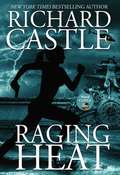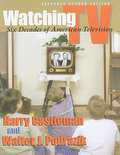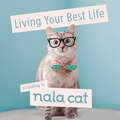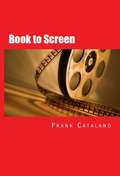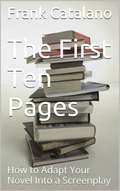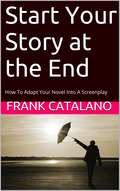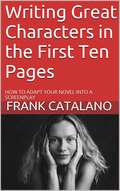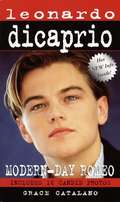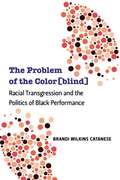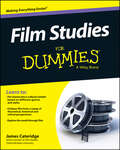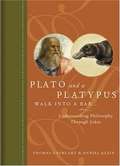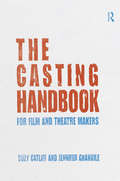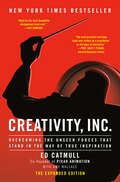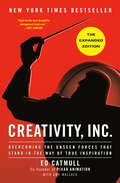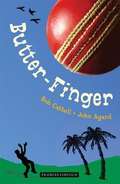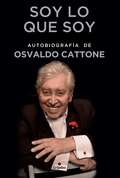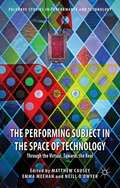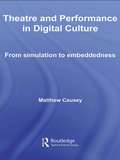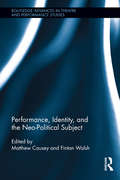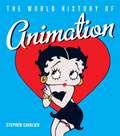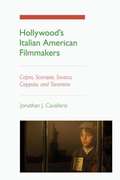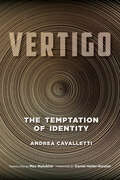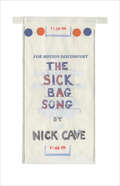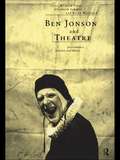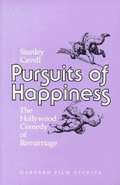- Table View
- List View
Raging Heat (Nikki Heat #6)
by Richard CastleIn New York Times Bestselling author Richard Castle's newest novel, an illegal immigrant falls from the sky and NYPD Homicide Detective Nikki Heat's investigation into his death quickly captures the imagination of her boyfriend the Pulitzer Prize-winning journalist, Jameson Rook. When he decides to work the case with Heat as his next big story, Nikki is at first happy to have him ride along. Yes, she must endure Rook's usual wild conspiracy speculations and adolescent wisecracks, but after reuniting following his recent assignment abroad, she's glad for the entertainment, the chance to bounce ideas, and just to be close to him again and feel the old spark rekindle. But when Rook's inquiry concludes that Detective Heat has arrested the wrong man for the murder, everything changes. <P> Balancing her high stakes job with a complicated romance has been a challenge ever since Nikki fell for the famous reporter. Now, her relationship lurches from mere complexity into sharp conflict over the most high-risk case of her career. Set against the raging force of Hurricane Sandy as it pounds New York, Heat battles an ambitious powerbroker, fights a platoon of urban mercenaries, and clashes with the man she loves. Detective Heat knows her job is to solve murders. She just worries that solving this one will be the death of her relationship.
Watching TV: Six Decades of American Television (Expanded Second Edition)
by Harry Castleman Walter J. PodrazikWatching TV provides a fascinating history of how the personalities, popular shows, and coverage of key events have evolved during the past six decades. Watching TV is the standard history of American television, now updated to include the most recent programming and industry developments.
Living Your Best Life According to Nala Cat
by Nala Cat Varisiri MethachittiphanInstagram's most popular feline, Nala Cat, is here to make people smile with her charming guide on how to live your best life.Are you ready to live your best life? Nala Cat, Guinness World Record holder, can teach you how.Nala uses her charm, feistiness, and cute face to spread happiness and love to millions. As an adopted cat, she also uses her social media influence to advocate for shelter animals. Nala's happy, can-do attitude makes her the perfect cat to show us how to love, dream, and be successful in life.Get ready to live your best life with Nala Cat's literary debut, featuring never-before-seen photos and a special Nala-approved guide on the best practices to adopt and take care of a pet.For more warm fuzzies follow @nala_cat
Book to Screen (How to Adapt Your Novel to a Screenplay #5)
by Frank CatalanoADAPTING YOUR NOVEL INTO A SCREENPLAY BOOK TO SCREEN was first presented as part of the 25th Annual Writer's Conference sponsored by San Diego State University on February 6 through the 8th, 2009 at the Double Tree Hilton Hotel in Mission Hills, California. The following transcript was presented and recorded by Frank Catalano as part of the programs offered at the conference. The book is based partly upon that presentation, focuses on the adaptation of an existing novel into a screenplay for presentation as a motion picture, television program or Internet content. Writers of fiction and non-fiction and industry professionals from the publishing business primarily attended the 25th Annual Writer's Conference. Mr. Catalano's seminars focused upon those writers seeking to adapt their novels into screenplays. The complete list of seminar presentations by Frank Catalano for this conference is: BOOK 1: WRITE GREAT CHARACTERS IN THE FIRST TEN PAGES BOOK 2: WRITING ON YOUR FEET - IMPROVISATIONAL TECHNIQUES FOR WRITERS - Part 1 BOOK 3: START YOUR STORY AT THE END BOOK 4: THE FIRST TEN PAGES BOOK 5: BOOK TO SCREEN BOOK 6: ACTING IT OUT - IMPROVISATIONAL TECHNIQUES FOR WRITERS - Part 2 BOOK 7: WRITE GREAT DIALOGUE
The First Ten Pages (How to Adapt Your Novel Into a Screenplay #4)
by Frank CatalanoHOW TO HAVE A STRONG OPENING FOR YOUR SCREENPLAY SO THEY WILL READ IT TO THE END. THE FIRST TEN PAGES was first presented as part of the 25th Annual Writer's Conference sponsored by San Diego State University on February 6 through the 8th, 2009 at the Double Tree Hilton Hotel in Mission Hills, California. The following transcript was presented and recorded by Frank Catalano as part of the programs offered at the conference. The book ibased partly upon that presentation, focuses on the adaptation of an existing novel into a screenplay for presentation as a motion picture, television program or Internet content. Writers of fiction and non-fiction and industry professionals from the publishing business primarily attended the 25th Annual Writer's Conference. Mr. Catalano's seminars focused upon those writers seeking to adapt their novels into screenplays. The complete list of seminar presentations by Frank Catalano for this conference is: BOOK 1: WRITE GREAT CHARACTERS IN THE FIRST TEN PAGES BOOK 2: WRITING ON YOUR FEET - IMPROVISATIONAL TECHNIQUES FOR WRITERS - Part 1 BOOK 3: START YOUR STORY AT THE END BOOK 4: THE FIRST TEN PAGES BOOK 5: BOOK TO SCREEN BOOK 6: ACTING IT OUT - IMPROVISATIONAL TECHNIQUES FOR WRITERS - Part 2 BOOK 7: WRITE GREAT DIALOGUE
Start Your Story at the End: How to Adapt Your Novel into a Screenplay
by Frank CatalanoSTART YOUR STORY AT THE END was first presented as part of the 25th Annual Writer's Conference sponsored by San Diego State University on February 6 through the 8th, 2009 at the Double Tree Hilton Hotel in Mission Hills, California by Frank Catalano as part of the programs offered at the conference. Writers of fiction and non-fiction and industry professionals from the publishing business primarily attended the 25th Annual Writer's Conference. Mr. Catalano's seminars focused upon those writers seeking to adapt their novels into screenplays. The complete list of seminar presentations by Frank Catalano for this conference is: BOOK 1: WRITE GREAT CHARACTACTERS IN THE FIRST TEN PAGES BOOK 2: WRITING ON YOUR FEET - IMPROVISATIONAL TECHNIQUES FOR WRITERS BOOK 3: START YOUR STORY AT THE END BOOK 4: THE FIRST TEN PAGES BOOK 5: BOOK TO SCREEN (SEMINAR COMPILATION OF ALL BOOKS) BOOK 6: ACTING IT OUT - IMPROVISATIONAL TECHNIQUES FOR WRITERS II BOOK 7: WRITE GREAT DIALOGUE
Writing Great Characters in the First Ten Pages: How to Adapt Your Novel Into a Screenplay
by Frank CatalanoWriters of fiction and non-fiction and industry professionals from the publishing business primarily attended the 25th Annual Writer's Conference. Mr. Catalano's seminars focused upon those writers seeking to adapt their novels into screenplays. The complete list of seminar presentations by Frank Catalano for this conference is: BOOK 1: WRITE GREAT CHARACTACTERS IN THE FIRST TEN PAGES BOOK 2: WRITING ON YOUR FEET - IMPROVISATIONAL TECHNIQUES FOR WRITERS BOOK 3: START YOUR STORY AT THE END: FOR WRITERS BOOK 4: THE FIRST TEN PAGES BOOK 5: BOOK TO SCREEN BOOK 6: ACTING IT OUT - IMPROVISATIOINAL TECHNIQUES FOR WRITERS II BOOK 7: WRITE GREAT DIALOGUE
Leonardo DiCaprio, Modern-day Romeo
by Grace CatalanoBiography of the famous actor, star of the movie Titanic
The Problem of the Color[blind]: Racial Transgression and the Politics of Black Performance
by Catanese Brandi Wilkins"Catanese's beautifully written and cogently argued book addresses one of the most persistent sociopolitical questions in contemporary culture. She suggests that it is performance and the difference it makes that complicates the terms by which we can even understand 'multicultural' and 'colorblind' concepts. A tremendously illuminating study that promises to break new ground in the fields of theatre and performance studies, African American studies, feminist theory, cultural studies, and film and television studies. " ---Daphne Brooks, Princeton University "Adds immeasurably to the ways in which we can understand the contradictory aspects of racial discourse and performance as they have emerged during the last two decades An ambitious, smart, and fascinating book. " ---Jennifer DeVere Brody, Duke University Are we a multicultural nation, or a colorblind one? The Problem of the Color[blind] examines this vexed question in American culture by focusing on black performance in theater, film, and television. The practice of colorblind casting---choosing actors without regard to race---assumes a performing body that is somehow race neutral. But where, exactly, is race neutrality located---in the eyes of the spectator, in the body of the performer, in the medium of the performance? In analyzing and theorizing such questions, Brandi Wilkins Catanese explores a range of engaging and provocative subjects, including the infamous debate between playwright August Wilson and drama critic Robert Brustein, the film career of Denzel Washington, Suzan-Lori Parks's play Venus, the phenomenon of postblackness (as represented in the Studio Museum in Harlem's "Freestyle" exhibition), the performer Ice Cube's transformation from icon of gangsta rap to family movie star, and the controversial reality television series Black. White. Concluding that ideologies of transcendence are ahistorical and therefore unenforceable, Catanese advances the concept of racial transgression---a process of acknowledging rather than ignoring the racialized histories of performance---as her chapters move between readings of dramatic texts, films, popular culture, and debates in critical race theory and the culture wars.
Film Studies For Dummies
by James CateridgeMake sense of the world of cinema Want to pull back the curtain on film? This hands-on, friendlyguide unravels the complexities of film and helps you put cinemainto a cultural context. You'll get an easy-to-follow introductionto different film genres and styles, learn about the history ofcinema, get to know who makes up a filmmaking team, explore globalcinema from Hollywood to Bollywood and much more.Film Studies For Dummies will open your mind to how thefilm industry works and help you to discover the impact of film onpopular culture. You'll get easy-to-read information on analyzingand critiquing film from a range of theoretical, historical andcritical perspectives, and learn how people communicate ideas infilm. You'll also be able to shine a light on how stories aredeveloped in movies, understand how a storyline is related tobroader issues in society and become a well-versed and insightfulfilm student.Covers the narrative, artistic, cultural, economic andpolitical implications of cinemaProvides conceptual frameworks for understanding a film'srelationship to realityExplores how people tell stories and communicate ideas infilmHelps you excel as a student of filmWhether you're planning to study film, a humanities student witha forthcoming module on film or a film enthusiast wondering if thismight be the future for you, Film Studies For Dummies hasyou covered.
Plato and a Platypus Walk Into a Bar... Understanding Philosophy Through Jokes
by Thomas Cathcart Daniel KleinFinally a crash course in philosophy via jokes. Gags really do explain the meaning of it all in this lively book, loaded with one-liners, vaudeville humor, cartoons, and even a limerick or two. A hilarious but profound tour de farce through Western philosophy covering such topics as: Logic (Sherlock Holmes never deduced anything!) Existentialism (You haven't lived until you think about death all the time) Ethics (The Sopranos' contribution to the Golden Rule) and Language (It all depends on what your definition of "is" is.)
The Casting Handbook: For Film and Theatre Makers
by Suzy Catliff Jennifer GranvilleCasting is a crucial creative element of any production - and yet the craft and skills needed to put together a successful and exciting cast are often overlooked. The Casting Handbook explains the casting process from beginning to end and covers everything producers and directors needs to know – as well as proving a fascinating and illuminating read for actors. The book explores: how to prepare a breakdown where to source actors how to prepare for a casting session how to make casting decisions how a cast is put together how deals are done ethics and the law, with special reference to casting children how a casting director contributes to the initial development of the script how the casting works from fringe theatre to Hollywood blockbusters The Casting Handbook considers actors’, producers’, agents’ and directors’ relationship with a casting director, the day to day work that is casting, and how approaching it in a professional and informed manner can make the difference to the final product. Including interviews with actors, agents, directors, casting directors and producers; case studies; exercises; and a fact file of useful templates and contacts, this book offers a thorough induction into the casting process, suitable for students and early career professionals in any media.
Creativity, Inc.: Overcoming the Unseen Forces That Stand in the Way of True Inspiration
by Ed Catmull Amy WallaceFrom Ed Catmull, co-founder (with Steve Jobs and John Lasseter) of Pixar Animation Studios, comes an incisive book about creativity in business—sure to appeal to readers of Daniel Pink, Tom Peters, and Chip and Dan Heath.Creativity, Inc. is a book for managers who want to lead their employees to new heights, a manual for anyone who strives for originality, and the first-ever, all-access trip into the nerve center of Pixar Animation—into the meetings, postmortems, and &“Braintrust&” sessions where some of the most successful films in history are made. It is, at heart, a book about how to build a creative culture—but it is also, as Pixar co-founder and president Ed Catmull writes, &“an expression of the ideas that I believe make the best in us possible.&”For nearly twenty years, Pixar has dominated the world of animation, producing such beloved films as the Toy Story trilogy, Monsters, Inc., Finding Nemo, The Incredibles, Up, and WALL-E, which have gone on to set box-office records and garner thirty Academy Awards. The joyousness of the storytelling, the inventive plots, the emotional authenticity: In some ways, Pixar movies are an object lesson in what creativity really is. Here, in this book, Catmull reveals the ideals and techniques that have made Pixar so widely admired—and so profitable.As a young man, Ed Catmull had a dream: to make the first computer-animated movie. He nurtured that dream as a Ph.D. student at the University of Utah, where many computer science pioneers got their start, and then forged a partnership with George Lucas that led, indirectly, to his founding Pixar with Steve Jobs and John Lasseter in 1986. Nine years later, Toy Story was released, changing animation forever. The essential ingredient in that movie&’s success—and in the thirteen movies that followed—was the unique environment that Catmull and his colleagues built at Pixar, based on philosophies that protect the creative process and defy convention, such as:• Give a good idea to a mediocre team, and they will screw it up. But give a mediocre idea to a great team, and they will either fix it or come up with something better.• If you don&’t strive to uncover what is unseen and understand its nature, you will be ill prepared to lead. • It&’s not the manager&’s job to prevent risks. It&’s the manager&’s job to make it safe for others to take them.• The cost of preventing errors is often far greater than the cost of fixing them. • A company&’s communication structure should not mirror its organizational structure. Everybody should be able to talk to anybody.• Do not assume that general agreement will lead to change—it takes substantial energy to move a group, even when all are on board.
Creativity, Inc. (The Expanded Edition): Overcoming the Unseen Forces That Stand in the Way of True Inspiration
by Ed Catmull Amy WallaceThe co-founder and longtime president of Pixar updates and expands his 2014 New York Times bestseller on creative leadership, reflecting on the management principles that built Pixar&’s singularly successful culture, and on all he learned during the past nine years that allowed Pixar to retain its creative culture while continuing to evolve.&“Might be the most thoughtful management book ever.&”—Fast Company For nearly thirty years, Pixar has dominated the world of animation, producing such beloved films as the Toy Story trilogy, Finding Nemo, The Incredibles, Up, and WALL-E, which have gone on to set box-office records and garner eighteen Academy Awards. The joyous storytelling, the inventive plots, the emotional authenticity: In some ways, Pixar movies are an object lesson in what creativity really is. Here, Catmull reveals the ideals and techniques that have made Pixar so widely admired—and so profitable. As a young man, Ed Catmull had a dream: to make the first computer-animated movie. He nurtured that dream as a Ph.D. student, and then forged a partnership with George Lucas that led, indirectly, to his founding Pixar with Steve Jobs and John Lasseter in 1986. Nine years later, Toy Story was released, changing animation forever. The essential ingredient in that movie&’s success—and in the twenty-five movies that followed—was the unique environment that Catmull and his colleagues built at Pixar, based on philosophies that protect the creative process and defy convention, such as:• Give a good idea to a mediocre team and they will screw it up. But give a mediocre idea to a great team and they will either fix it or come up with something better.• It&’s not the manager&’s job to prevent risks. It&’s the manager&’s job to make it safe for others to take them.• The cost of preventing errors is often far greater than the cost of fixing them.• A company&’s communication structure should not mirror its organizational structure. Everybody should be able to talk to anybody.Creativity, Inc. has been significantly expanded to illuminate the continuing development of the unique culture at Pixar. It features a new introduction, two entirely new chapters, four new chapter postscripts, and changes and updates throughout. Pursuing excellence isn&’t a one-off assignment but an ongoing, day-in, day-out, full-time job. And Creativity, Inc. explores how it is done.
Butter-Finger
by Bob Cattell John AgardButter-Finger follows the story of Riccardo Small, who misses a vital catch and is dropped from the cricket team. Riccardo takes refuge in his beloved calypso poems, written by John Agard, when he meets Count Crayfish, who helps him think of a way to still help the team. Ages 7 and up.
Soy lo que soy
by Oswaldo CattoneLa autobiografía de uno de los hombres más queridos e influyentes del teatro peruano Cuando empezó la cuarentena sanitaria en 2020 y las salas de teatro se cerraron, Osvaldo Cattone se las ingenió para mantener encendido su espíritu creador. Durante ese año se dio a la tarea de compendiar sus recuerdos más entrañables. El resultado es esta apasionante autobiografía que cifra una existencia consagrada al mundo del espectáculo. Soy lo que soy es un aleccionador y ameno recuento de una vida tocada por el duende de la vocación artística. Un recorrido por los tres países que lo acogieron, formaron y aplaudieron —Argentina, Italia y Perú—, y donde Cattone desarrolló una destacada carrera como actor, director, productor y empresario. Décadas de entrega profesional que hoy constituyen uno de los capítulos esenciales en la historia del teatro peruano. En estas ejemplares memorias, escritas a sus 87 años, Cattone celebra y agradece su vida, al tiempo que se despide de ella con la alegría y la lucidez que siempre lo acompañaron
The Performing Subject in the Space of Technology
by Matthew CauseyNow that the shock of the virtual has subsided toward a 'new-normal' of computational interference in all areas of life, it is an advantageous moment to reflect on the passage through the virtual and back to the real. Digital culture has developed into a bio-virtual environment in which the categories of the biological and the virtual no longer stand as separate. The contributors to this volume respond to the questions raised by the 'after-event' of the digital through practice-led researchanalyses of performance processes, philosophical readings of the work of art and technology, and performance studies investigations of the subject in the spaces of technology. The volume examines a wide range of activities, from bio-art to internet child pornography, gaming and social networking technologies to the use of motion-tracking in developing choreography and documentation. The authors draw from diverse perspectives in dance, theatre, performance, film and music studies, digital arts and culture.
Theatre and Performance in Digital Culture: From Simulation to Embeddedness (Routledge Advances in Theatre & Performance Studies)
by Matthew CauseyTheatre and Performance in Digital Culture examines the recent history of advanced technologies, including new media, virtual environments, weapons systems and medical innovation, and considers how theatre, performance and culture at large have evolved within those systems. The book examines the two Iraq wars, 9/11 and the War on Terror through the lens of performance studies, and, drawing on the writings of Giorgio Agamben, Alain Badiou and Martin Heidegger, alongside the dramas of Beckett, Genet and Shakespeare, and the theatre of the Kantor, Foreman, Socíetas Raffaello Sanzio and the Wooster Group, the book positions theatre and performance in technoculture and articulates the processes of aesthetics, metaphysics and politics. This wide-ranging study reflects on how the theatre and performance have been challenged and extended within these new cultural phenomena.
Performance, Identity, and the Neo-Political Subject (Routledge Advances in Theatre & Performance Studies #28)
by Matthew Causey Fintan WalshThis book stages a timely discussion about the centrality of identity politics to theatre and performance studies. It acknowledges the important close relationship between the discourses and practices historically while maintaining that theatre and performance can enlighten ways of being with others that are not limited by conventional identitarian languages. The essays engage contemporary theatre and performance practices that pose challenging questions about identity, as well as subjectivity, relationality, and the politics of aesthetics, responding to neo-liberal constructions and exploitations of identity by seeking to discern, describe, or imagine a new political subject. Chapters by leading international scholars look to visual arts practice, digital culture, music, public events, experimental theatre, and performance to investigate questions about representation, metaphysics, and politics. The collections seeks to foreground shared, universalist connections that unite rather than divide, visiting metaphysical questions of being and becoming, and the possibilities of producing alternate realities and relationalities. The book asks what is at stake in thinking about a subject, a time, a place, and a performing arts practice that would come ‘after’ identity, and explores how theatre and performance pose and interrogate these questions.
The World History of Animation
by Stephen CavalierLavishly illustrated and encyclopedic in scope, this book tells the genre’s 100-year-old story around the globe, featuring key players in Europe, North America, and Asia. From its earliest days, animation has developed multiple iterations and created myriad dynamic styles, innovative techniques, iconic characters, and memorable stories. Stephen Cavalier’s comprehensive account is organized chronologically and covers pioneers, feature films, television programs, digital films, games, independent films, and the web. An exhaustive time line of films and innovations acts as the narrative backbone, and must-see films are listed along with synopses and in-depth biographies of individuals and studios. The book explains the evolution of animation techniques, from rotoscoping to refinements of cel techniques, direct film, claymation, and more. A true global survey, this book is an exciting and inspirational journey through the large and still-expanding animation universe—a place as limitless as the human imagination.
Hollywood's Italian American Filmmakers: Capra, Scorsese, Savoca, Coppola, and Tarantino
by Jonathan J. CavalleroHollywood's Italian American Filmmakers explores the different ways in which Italian American directors from the 1920s to the present have responded to their ethnicity. While some directors have used film to declare their ethnic roots and create an Italian American "imagined community," others have ignored or even denied their background. Jonathan J. Cavallero examines the films of Frank Capra, Martin Scorsese, Nancy Savoca, Francis Ford Coppola, and Quentin Tarantino with a focus on what the films reveal about each director's view on Italian American identities. Whereas Capra's films highlight similarities between immigrant characters and WASP Americans, Scorsese accepts his ethnic heritage but also sees it as confining. Similarly, many of Coppola's films provide a nostalgic treatment of Italian American identity, but with little criticism of the culture's more negative aspects. And while Savoca's movies reveal her artful ability to recognize how ethnic, gender, and class identities overlap, Tarantino's films exhibit a playfully postmodern engagement with Italian American ethnicity. Cavallero's exploration of the films of Capra, Scorsese, Savoca, Coppola, and Tarantino demonstrates how immigrant Italians fought prejudice, how later generations positioned themselves in relation to their predecessors, and how the American cinema, usually seen as a cultural institution that works to assimilate, has also served as a forum where assimilation was resisted.
Vertigo: The Temptation of Identity
by Andrea CavallettiReading philosophy through the lens of Alfred Hitchcock’s Vertigo, Andrea Cavalletti shows why, for two centuries, major philosophers have come to think of vertigo as intrinsically part of philosophy itself.Fear of the void, terror of heights: everyone knows what acrophobia is, and many suffer from it. Before Freud, the so-called “sciences of the mind” reserved a place of honor for vertigo in the domain of mental pathologies. The fear of falling—which is also the fear of giving in to the temptation to let oneself fall—has long been understood as a destabilizing yet intoxicating element without which consciousness itself was inconceivable. Some went so far as to induce it in patients through frightening rotational therapies.In a less cruel but no less radical way, vertigo also staked its claim in philosophy. If Montaigne and Pascal could still consider it a perturbation of reason and a trick of the imagination which had to be subdued, subsequent thinkers stopped considering it an occasional imaginative instability to be overcome. It came, rather, to be seen as intrinsic to reason, such that identity manifests itself as tottering, kinetic, opaque and, indeed, vertiginous.Andrea Cavalletti’s stunning book sets this critique of stable consciousness beside one of Hitchcock’s most famous thrillers, a drama of identity and its abysses. Hitchcock’s brilliant combination of a dolly and a zoom to recreate the effect of falling describes that double movement of “pushing away and bringing closer” which is the habitual condition of the subject and of intersubjectivity. To reach myself, I must see myself from the bottom of the abyss, with the eyes of another. Only then does my “here” flee down there and, from there, attract me.From classical medicine and from the role of imagination in our biopolitical world to the very heart of philosophy, from Hollywood to Heidegger’s “being-toward-death,” Cavalletti brings out the vertiginous nature of identity.
The Sick Bag Song
by Nick CaveThe legendary indie rock star offers a genre-bending chronicle of his 2014 American tour with the Bad Seeds that&’s part memoir, part epic poem. The Sick Bag Song began when Nick Cave was struck with inspiration during a flight between tour stops and reached for an airplane sick bag to scribble it down. This improvised diary soon grew into a restless full-length contemporary odyssey. Spurred by encounters with modern-day North America, beset by longing and exhaustion, Cave teases out the significant moments, the people, the books, and the music that have influenced him over the years.Drawing inspiration from Leonard Cohen, John Berryman, Patti Smith, Sharon Olds, folk ballads and ancient texts, The Sick Bag Song takes the form of a quest, turning over questions of creativity, loss, death, and romance. It is also the perfect companion piece to the Sundance award-winning feature documentary 20,000 Days on Earth.
Ben Jonson and Theatre: Performance, Practice and Theory
by Richard Cave Elizabeth Schafer Brian WoollandBen Jonson and Theatre is an investigation and celebration of Jonson's plays from the point of view of the theatre practitioner as well as the teacher. Reflecting the increasing interest in the wider field of Renaissance drama, this book bridges the theory/practice divide by debating how Jonson's drama operates in performance. Ben Jonson and Theatre includes: * discussions with and between practitioners * essays on the staging of the plays * edited transcripts of interviews with contemporary practitioners The volume includes contributions from Joan Littlewood, Sam Mendes, John Nettles, Simon Russell Beale and Geoffrey Rush, Oscar-winning actor for Shine.
Pursuits of Happiness: The Hollywood Comedy of Remarriage
by Stanley CavellDuring the 30's and 40's, Hollywood produced a genre of madcap comedies that emphasized reuniting the central couple after divorce or separation. And the female protagonists were strong, independent, and sophisticated. Here, Stanley Cavell examines seven of those classic movies for their cinematic techniques, and for such varied themes as feminism, liberty and interdependence. Included are Adam's Rib, Bringing Up Baby, and The Philadelphia Story.
